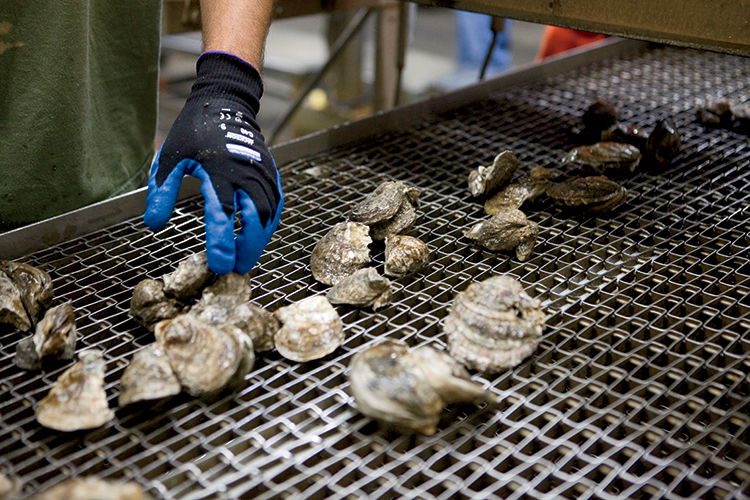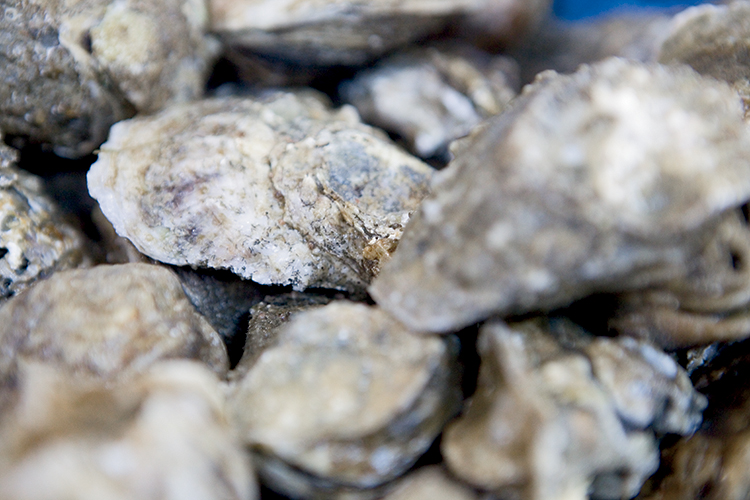Home > Alabama > Alabama Crops & Livestock > Alabama Seafood Special
Alabama Seafood Special
If feasting on Alabama’s big four food groups – shrimp, oysters, crab and fish – floats your boat, then take time to thank one of the 11,000 fishermen and processors who make up Alabama’s robust Gulf seafood industry.
The state’s seafood industry boasted nearly a $500 million impact in 2011, involving all aspects of industry employment, including restaurants, retailers, fishermen and women, inspectors, wholesalers and processors.
Working with this dedicated group impresses Chris Blankenship, director of Alabama’s Department of Conservation and Natural Resources Marine Resources Division.
“The hard-working men and women of the seafood industry are the backbones of these coastal communities. The harvesting and processing of seafood adds money to the local economy, much like farming. When you buy local seafood instead of imports, you are putting money right back into our state.”
From Tide to Table
Fourth-generation seafood processor Bon Secour Fisheries, Inc. prides itself on more than 110 years of seafood harvesting, processing, packing and distributing of fresh, healthy fare.
Recognized as one of the largest oyster processing and distribution companies in the U.S., Bon Secour is family-owned and -operated by John Ray Nelson and his sons, John Andrew, David and Chris.
“We are an integral part of Alabama’s proud and vital seafood industry, which played such an important role in settling South Alabama,” Chris Nelson says. “Our 100 employees process and pack under Bon Secour Brand Gulf shrimp and Nelson’s Brand Bon Secour oysters, turning a $4.5 million impact annually.”
Alabama seafood is defined as any seafood product sold by Alabama businesses and sourced from Gulf and local waters.
“Even though Alabama fishermen catch and land a great deal of seafood in the state, much seafood is brought to Alabama from other Gulf states and processed here,” Blankenship says. “Our processors bring in sack oysters from Louisiana, Texas, Mississippi and Florida, as well as Alabama, and shuck and process them here. The most important part of the definition is the product has to be domestic seafood from the Gulf of Mexico or other Gulf Coast states and sold or processed by an Alabama business.”
Blankenship assures consumers they can feel safe when eating Alabama Gulf seafood.
“The state has a first-class seafood testing program,” he says. “The Marine Resources Division takes seafood samples from our waters every month. Our big four food groups are tested by the Alabama Department of Public Health. The Alabama Department of Agriculture and Industries also samples seafood product from our state’s seafood processors monthly to ensure that what comes into our state is safe.”
Seafood inspection is even more critical because less than 5 percent of imported seafood is inspected by the federal government, Nelson says. “You must ask and verify that the shrimp you have ordered at the restaurant or see in the fresh seafood case at your local grocery is in fact Gulf shrimp.”
Buying the Best
Variety is definitely the spice of life when it comes to selecting Alabama seafood for your next meal. From brown, white and royal red shrimp to half-shell or shucked quarts and gallons of oysters, your dining table will hold a feast. Fish species abound, from offshore red snapper and grouper to inshore sheepshead, Spanish mackerel, flounder and mullet.
“In Alabama, we have a real cornucopia of seafood to choose from,” Blankenship says. “The closer you get any product to the source, the fresher and better it is. I encourage people to visit eatalabamaseafood.com. You can search for Alabama seafood in your city or town by restaurant, wholesaler or retailer. It’s a great site with recipes and how-to illustrations and videos.”







